I. An overview of the War Remnants Museum
The War Remnants Museum is one of the most renowned places of historical interest for many years in Ho Chi Minh City. The Vietnam War is a war of great influence in modern world history. To thoroughly understand the Vietnam War, many tourists, especially those from the West, have visited the museum to learn about how Vietnam managed to clinch a landslide victory over the US and the aftermath of this war.
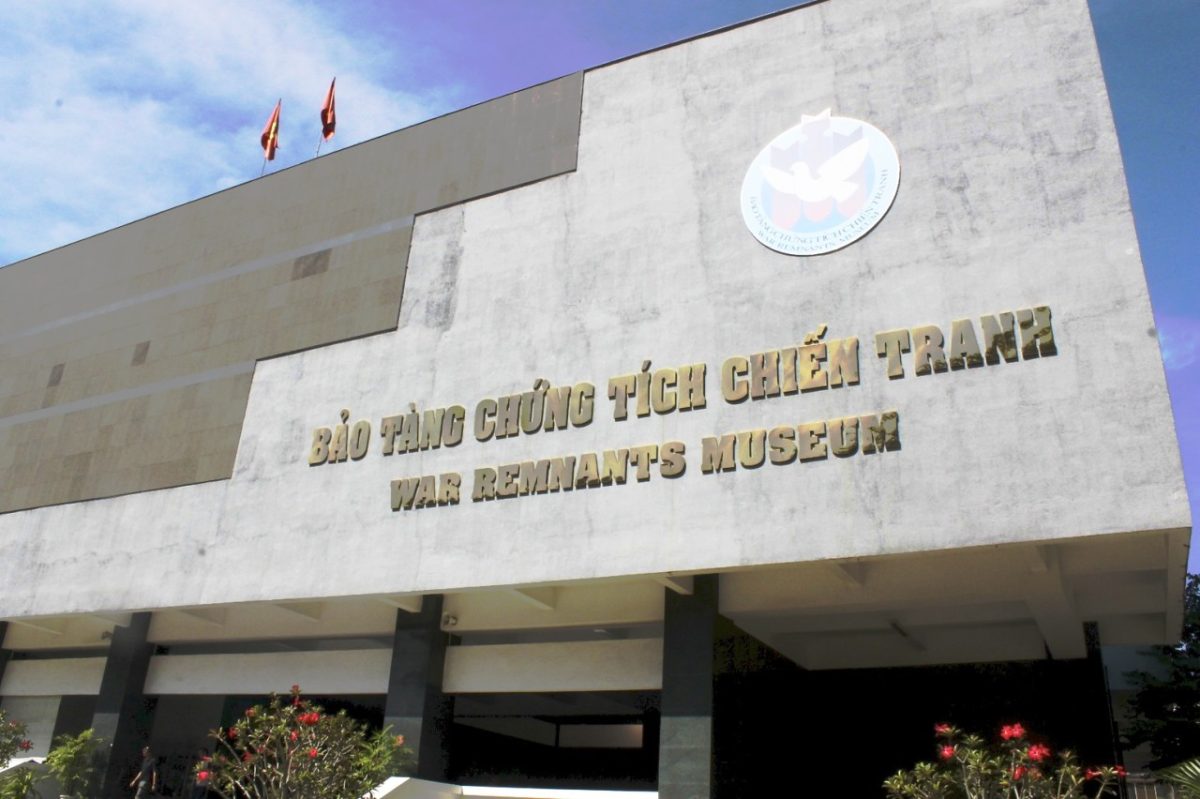
II. The history of the museum
Having operated by the Vietnamese government on September 4th, 1975, “Exhibition House for US and Puppet Crimes” was an earlier version of the war museum with the aim of exposing war crimes. However, when the US and Vietnam standardized relations during the 90s, the name of this museum changed to the “Exhibition House for Crimes of War and Aggression” before ending up with the name has. On November 6th, 1998, the museum became an official member of the International Network of Museums for Peace.
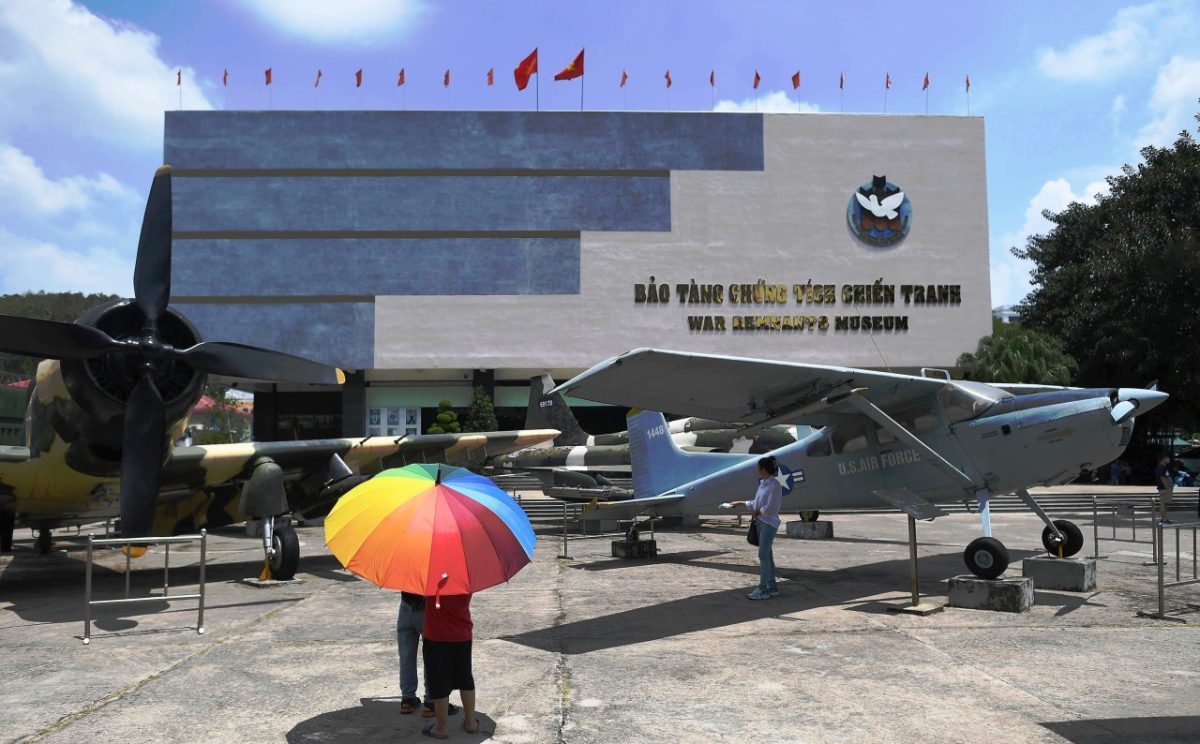
III. Must-see things in Vietnamese war museum
The War Remnants Museum has outdoor exhibitions and a main 3-storey exhibition building with galleries of permanent and temporary exhibitions on each floor. This museum stores more than 20,000 documentaries, artifacts, images and films. Additionally, the Museum has welcomed over 15 million visitors who are both domestic and foreign, and currently about 500,000 ones each year.
1. Military equipment in the outdoor exhibition
When passing through the gate of the War Remnants Museum, you can see a huge number of heavy weapons. From the view of the flycam, there are a lot of arms are on display in the courtyard. They are aircraft, armored tanks, helicopters, missiles, bombs, and mines.
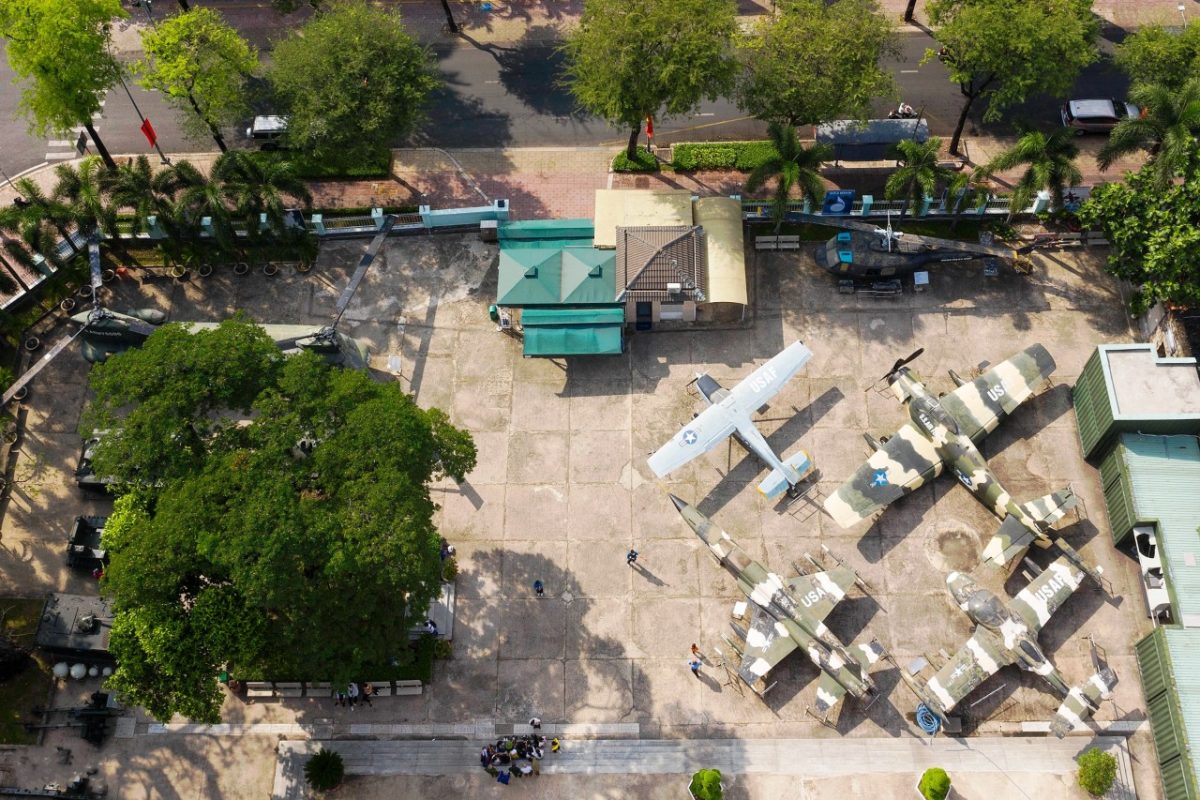
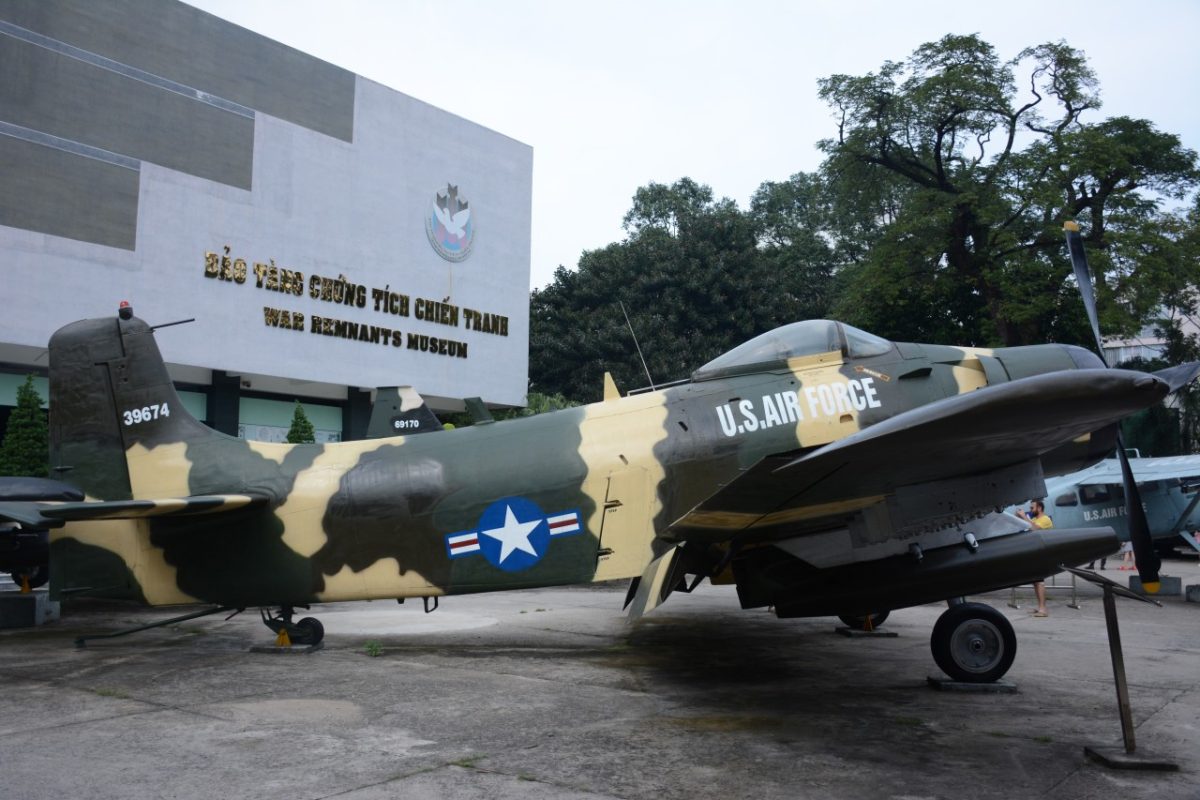
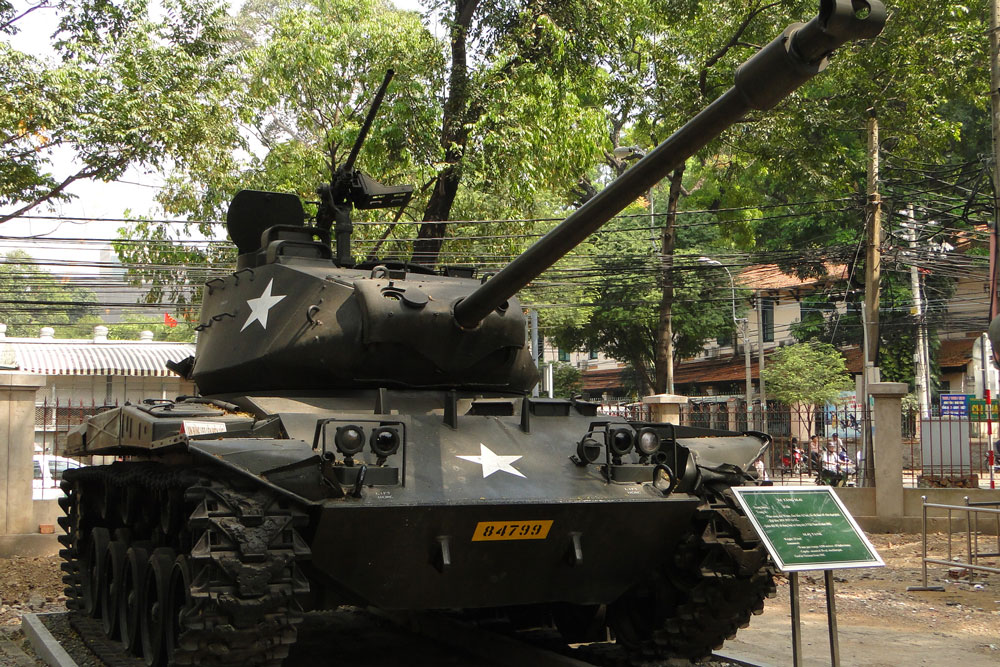
In the backside, you will see the prison conditions in the U.S War of Aggression in Vietnam. It was a typical example of cruelty and dubbed as “the hells on earth.” Various techniques and instruments of brutal torture inflicted on political prisoners and prisoners of war are displayed here. In addition, photos and artifacts also reveal how Vietnamese patriots were brutally tortured and held in detention.
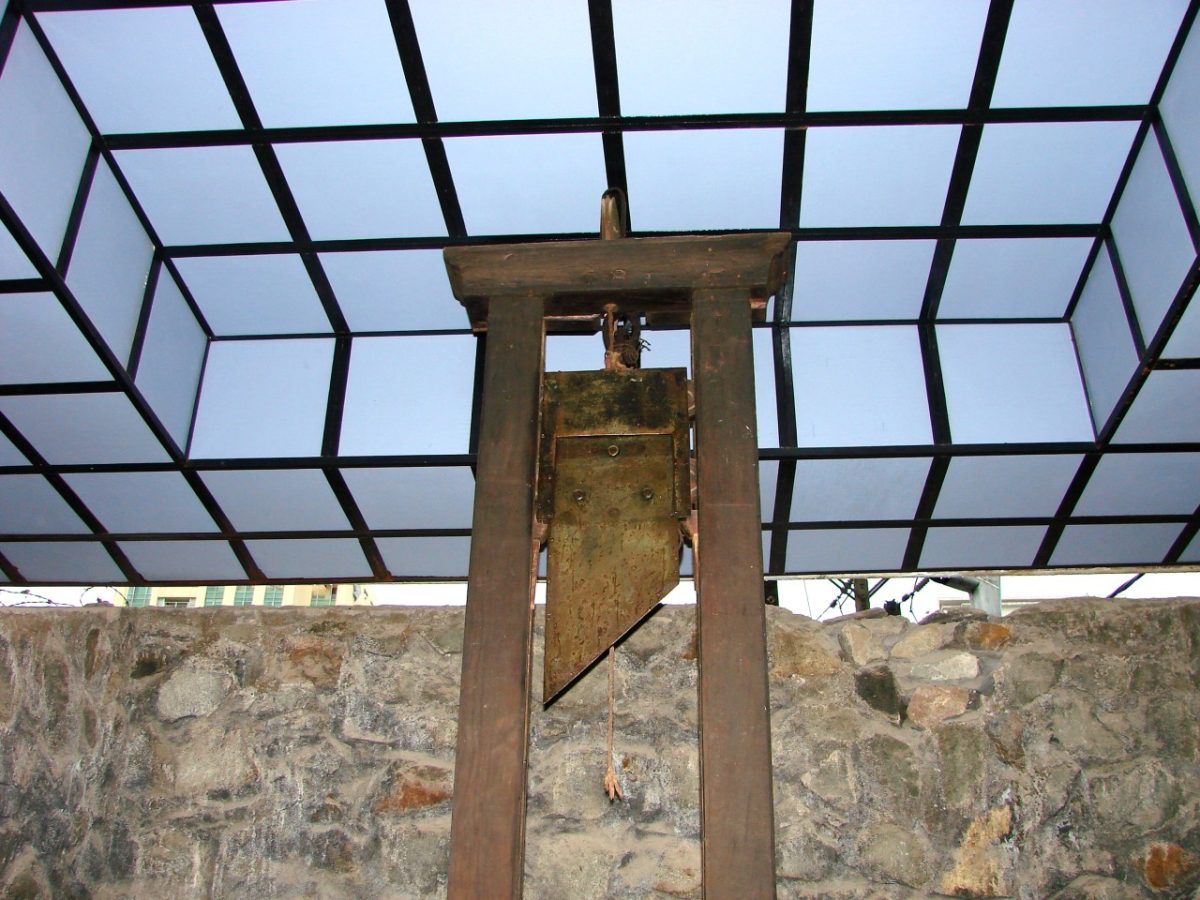
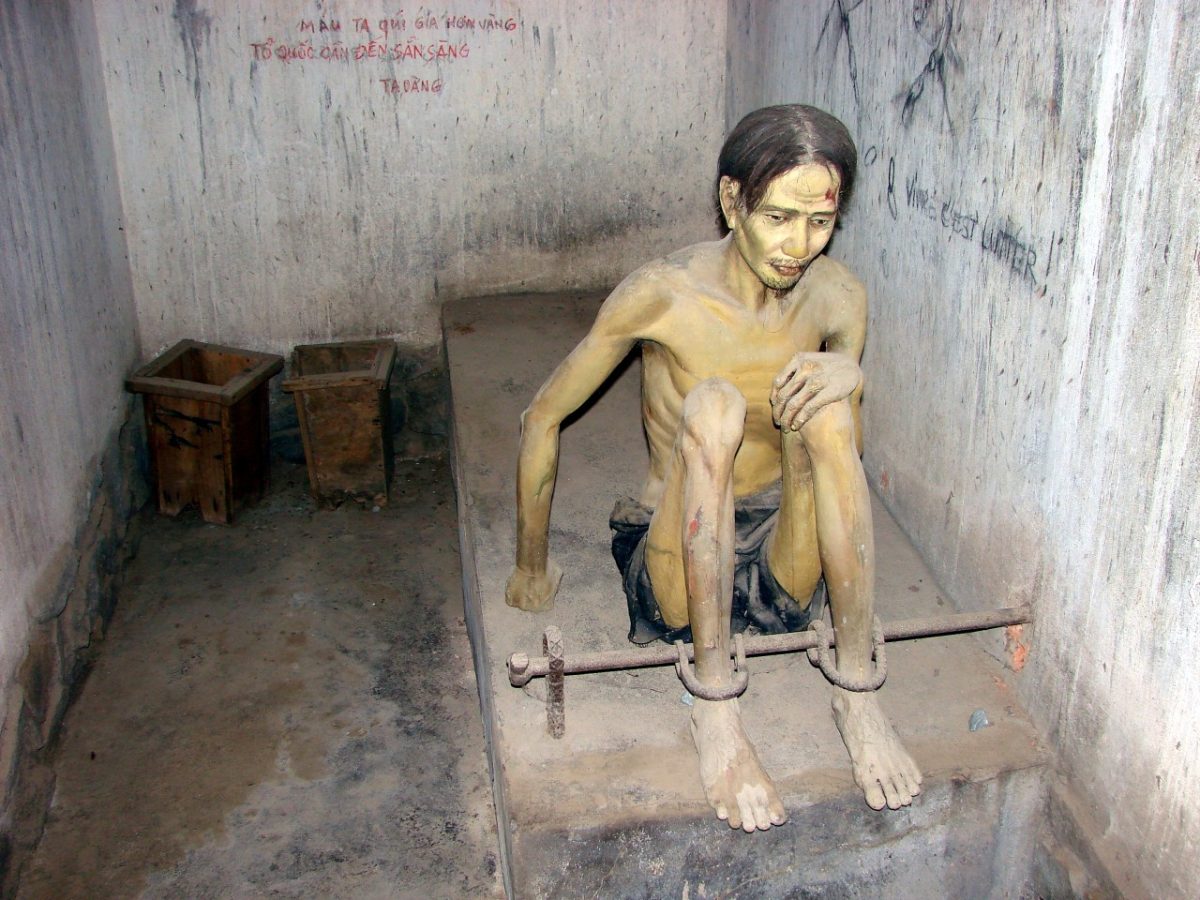
2. Ground floor exhibition – How the world supports Vietnam in the resistance war
When entering the museum through the front door, you can see an exhibition “The world supports Vietnam in the resistance war.” There are about 119 photos and 85 documents and artifacts on display in this exhibition. Visitors will have chances to see how people around the world backed the Vietnamese struggle against foreign forces. Moreover people from all continents showed their protest against U.S aggression in Vietnam by participating in rallies and conferences. Their support can be seen via posters, banners, flags, leaflets and other items by individuals and organizations.
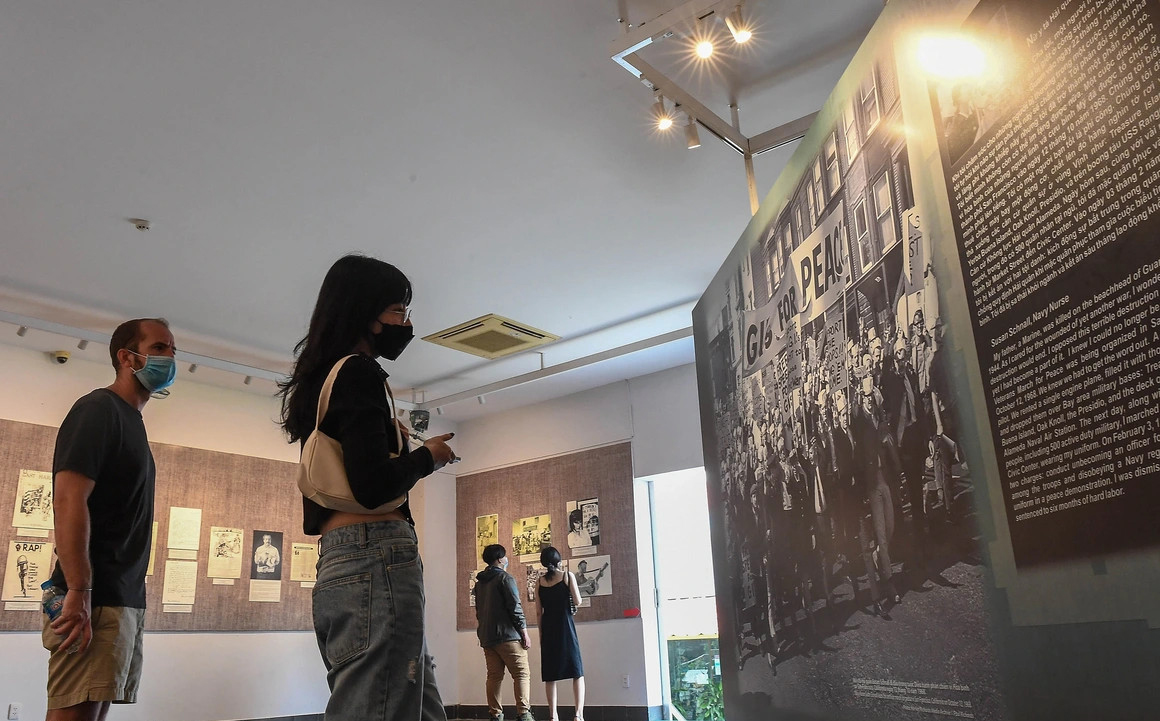
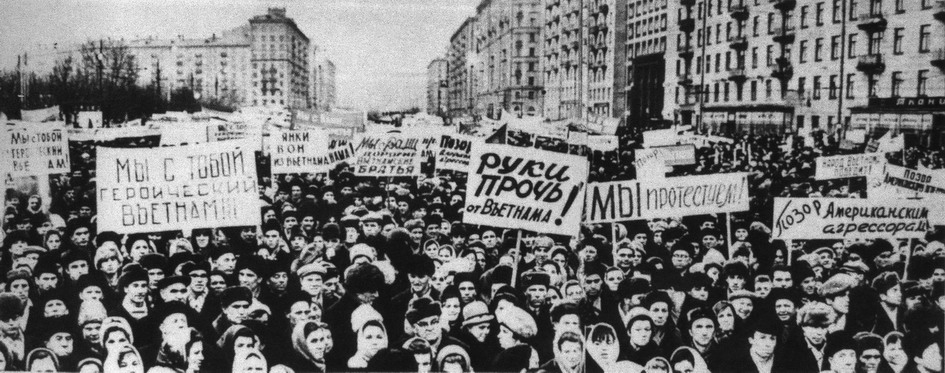
3. First floor exhibition – consequences of Agent Orange
On this floor, there are two thematic collections “Agent Orange Aftermath in the U.S War of Aggression in Vietnam” and “War Crimes”.
In the former gallery, the exhibition includes 100 photos, 10 documents and 20 artifacts. Looking at these items, you will see the devastation that toxic chemicals brought to Vietnamese lands and people. During the war, the US military poured down areas which are now central and southern Vietnam about 80 million liters of defoliants. In particular, sixty five percent of which was Agent Orange, and they contained 366kg of a highly poisonous chemical named dioxin. The defoliants contaminated lands and caused serious health impacts on millions of local people and their future generation, including cancers, congenital deformities and a range of other functional disorders. The War was over, but grim legacies of Agent Orange are still lingering. Victims of Agent Orange now are witnessed to one of consequences of the war.
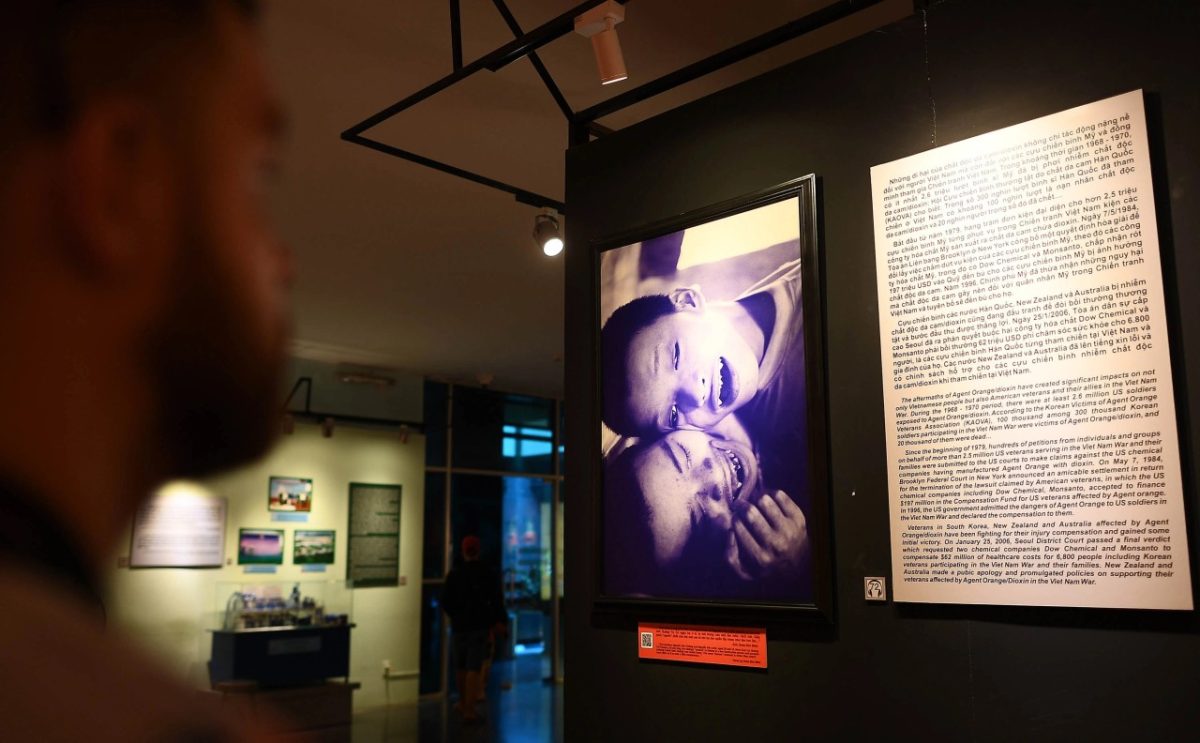
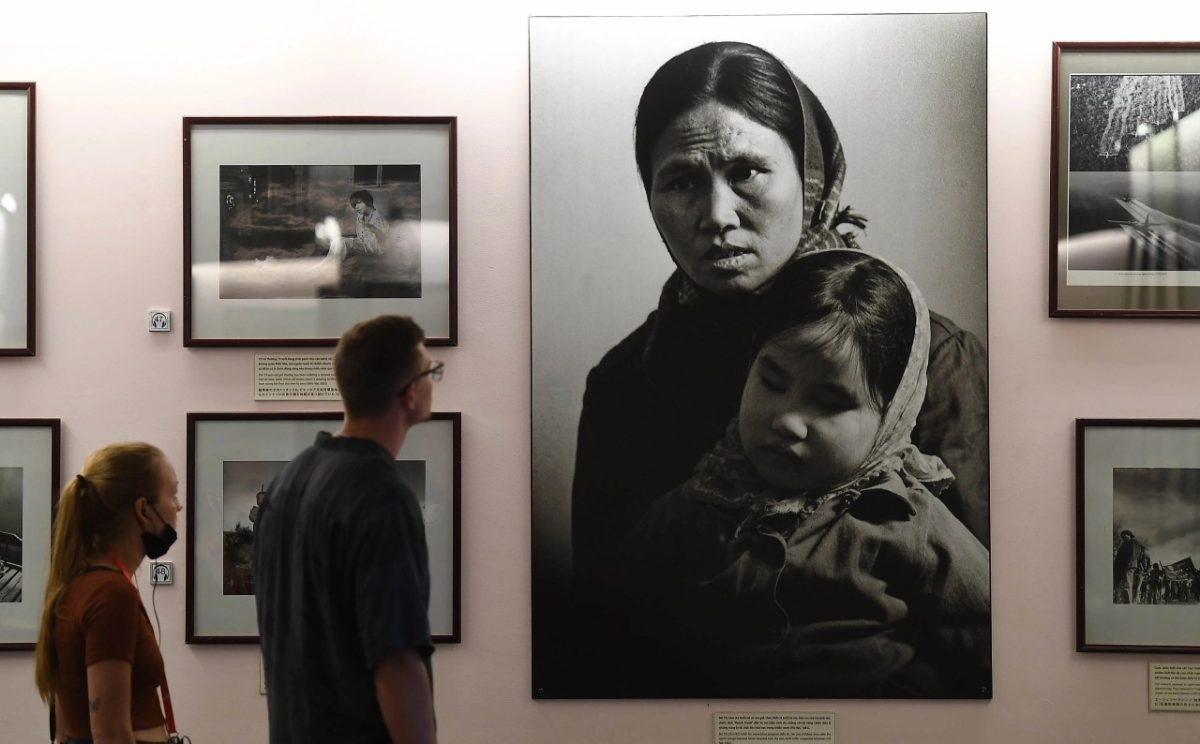
On the other side, the “War Crimes” gallery comprises 125 photos, 22 documents and 243 artifacts, showing the consequences of the atrocities. The U.S forces systematically captured, tortured, raped, and killed civilian populations and prisoners of war, and even perpetrated massacres. As a result, the war ended with about 3 million dead, 2 million injured, 200,000 missing, and heavy damage to facilities across the country.
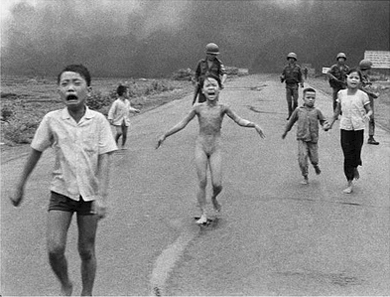
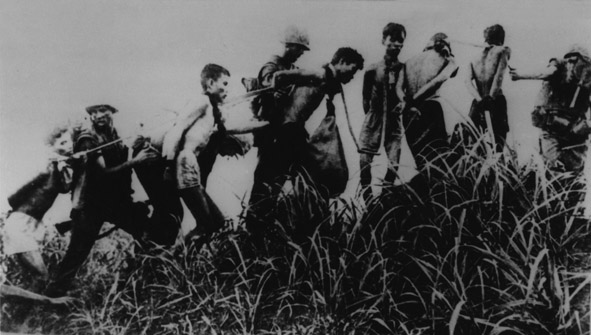

4. War remnants museum’s second floor exhibition
The highest floor will provide visitors with an overview of the Second Indochina War in exhibitions such as “Vietnam – War and Peace” and “Historic Truths”.
“Vietnam – War and Peace” is a collection of 123 documentary photos by Japanese photographer Bunyo Ishikawa. These photos were taken during the wartime, showing many aspects of this time and brutal murder of the U.S soldiers. Beside that photos in the exhibitions also tell young generations about the loss of the war as well as the value of peace.
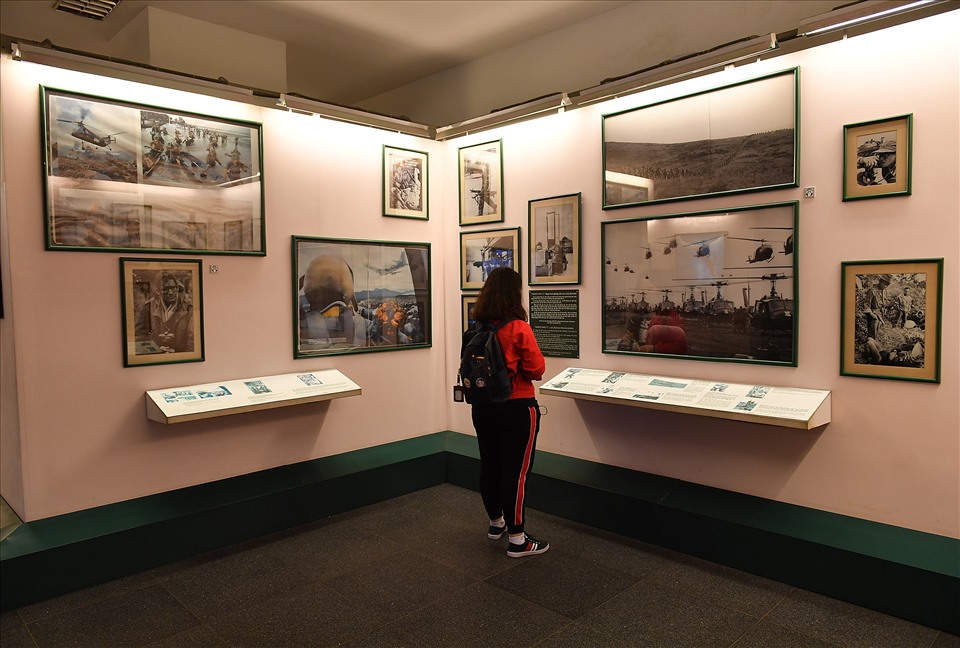

In the gallery of “Historic Truths”, visitors can see the contexts of the 20th century in Vietnam when France and the US waged their wars of aggression against. This gallery consists of 66 photos, 20 documents, and 153 artifacts.
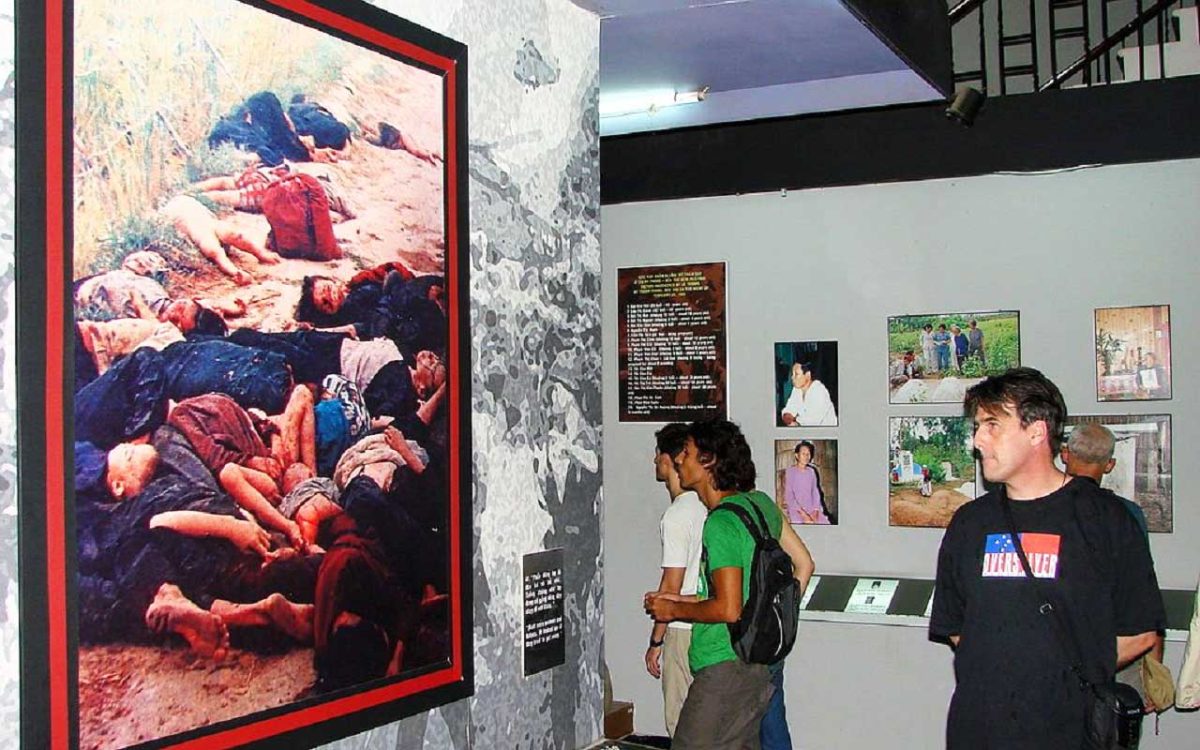
IV. Location and Opening Hours of War Remnants Museum
- Location: 28 Vo Van Tan, District 3, Ho Chi Minh City
- Opening hours: from 7:30 am to 5:00 pm
- The Museum is open daily, including Tet and other holidays.
- Note: The ticket counter is closed at 4:30 pm.
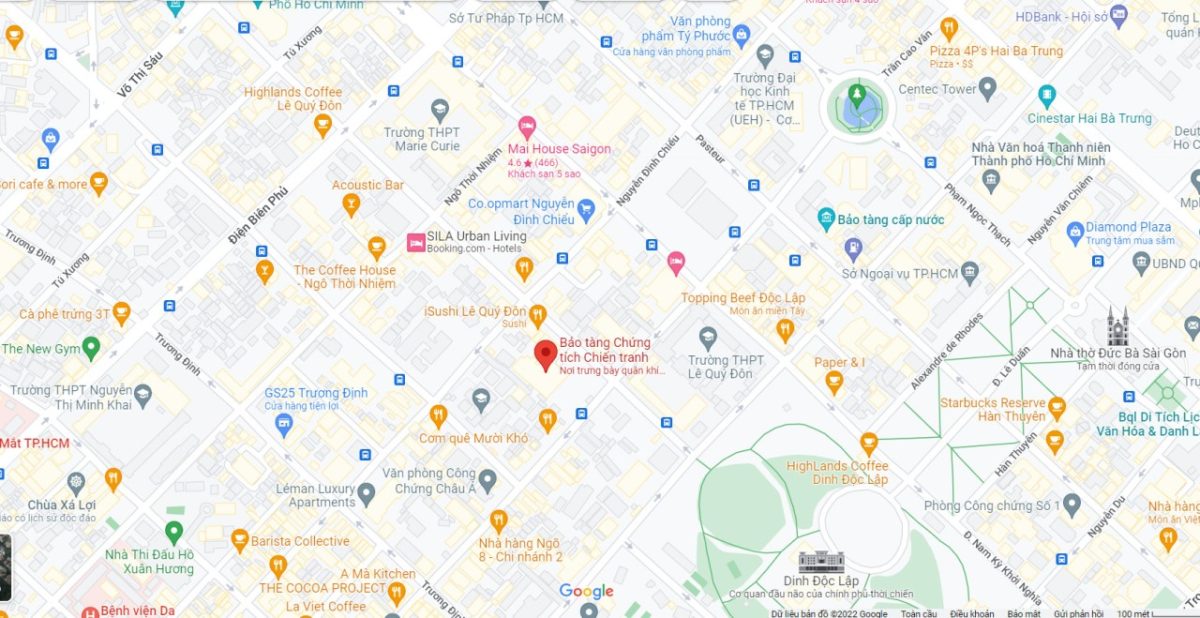
V. War Remnants Museum Entrance Fee
* Entrance fee for:
- Adults: 40,000VND
- Students, children aged from 6 to 15, and citizen aged 60 and above: 20,000VND
- Children aged under 6: free
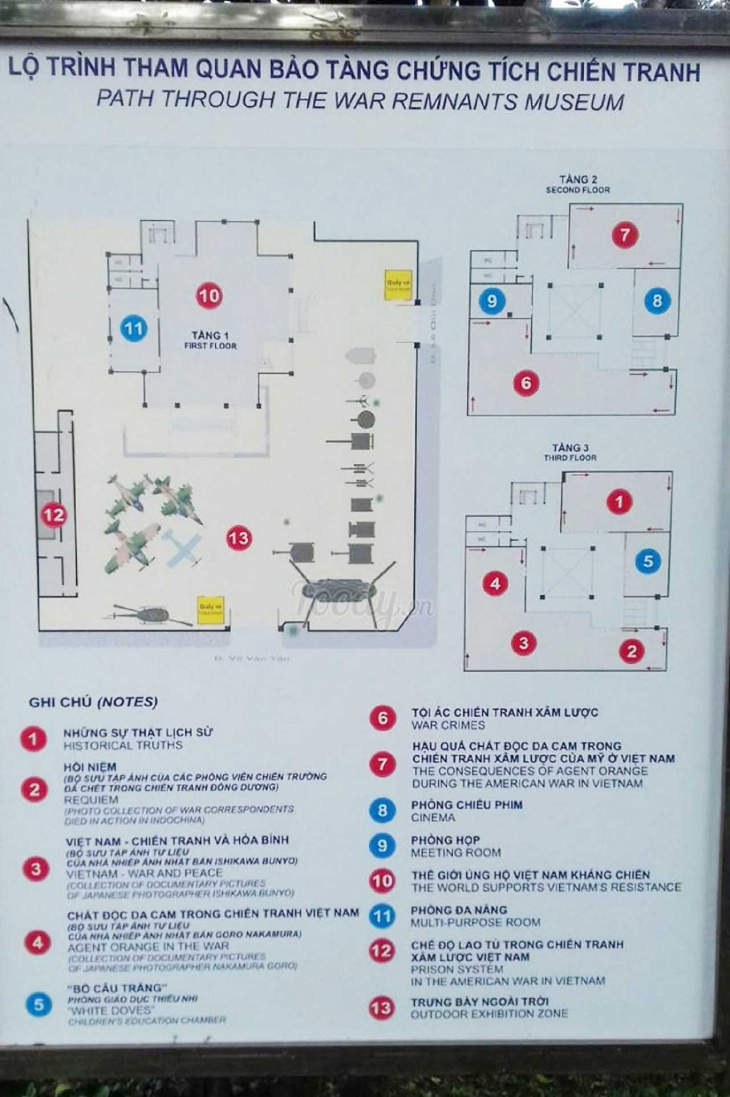
VI. How to Get to War Remnants Museum
To come to the Museum, visitors can go by taxi, which is available on all roads in Ho Chi Minh City. If you want to save money and discover the city, the bus and tram will be a great choice for you. In the other words, getting a car or motorbike ride is also a wonderful experience.
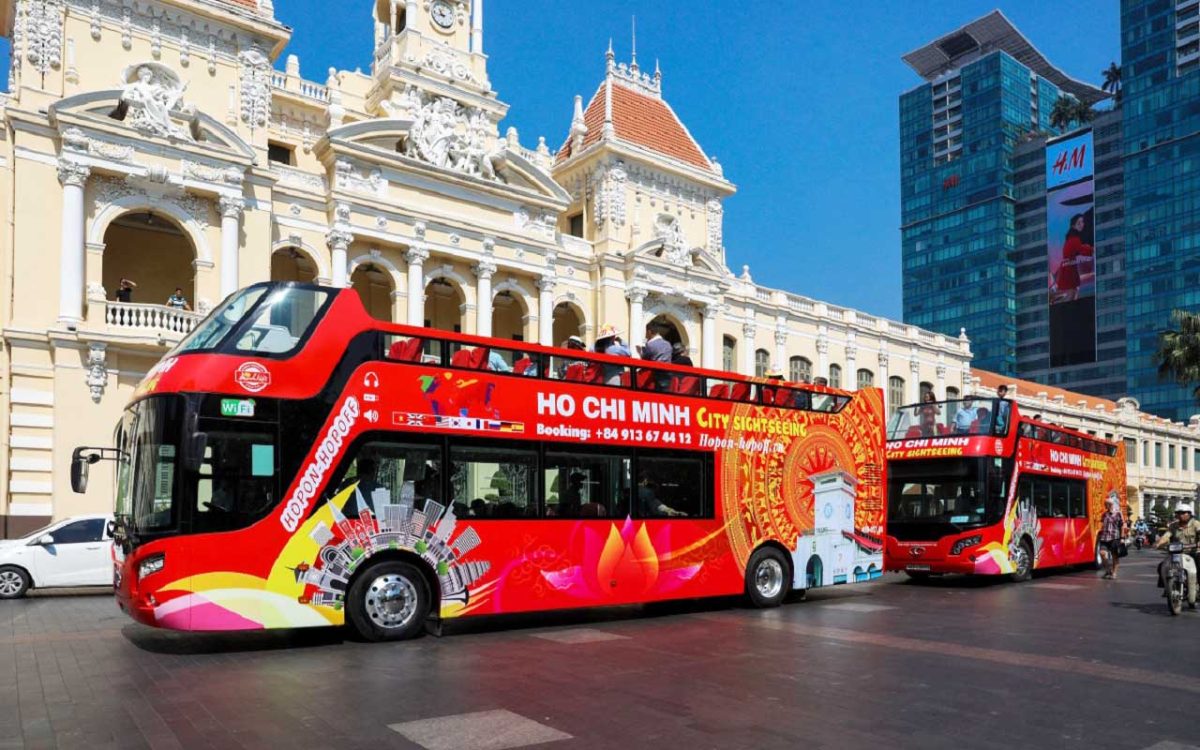
VII. Rules and Regulations
- Suitable clothes and good manners are required.
- Park your vehicles at the designated areas; keep everything clean and neat.
- Queue to buy tickets; put the logo on your shirts and show your tickets to the ticket-checking staff before entering the Museum.
- Leave your bulky luggage (if any) in the ticketing office and take care of your money and other valuable possessions.
- Follow the guidance of the Museum Staff and the instruction boards during your visit.
- Do not carry banned items such as weapons, toxins, explosives and flammable substances into the Museum.
- Do not smoke in the exhibition areas and do not write or draw on the exhibits.
- Photography, videography, audio recording or other activities for special purposes must be pre-approved by the Museum.
- Contact the Museum Staff for requests such as tour registration or any further enquiries.
- Visitors are liable for any damage to the Museum.
Source: https://en.wikipedia.org/


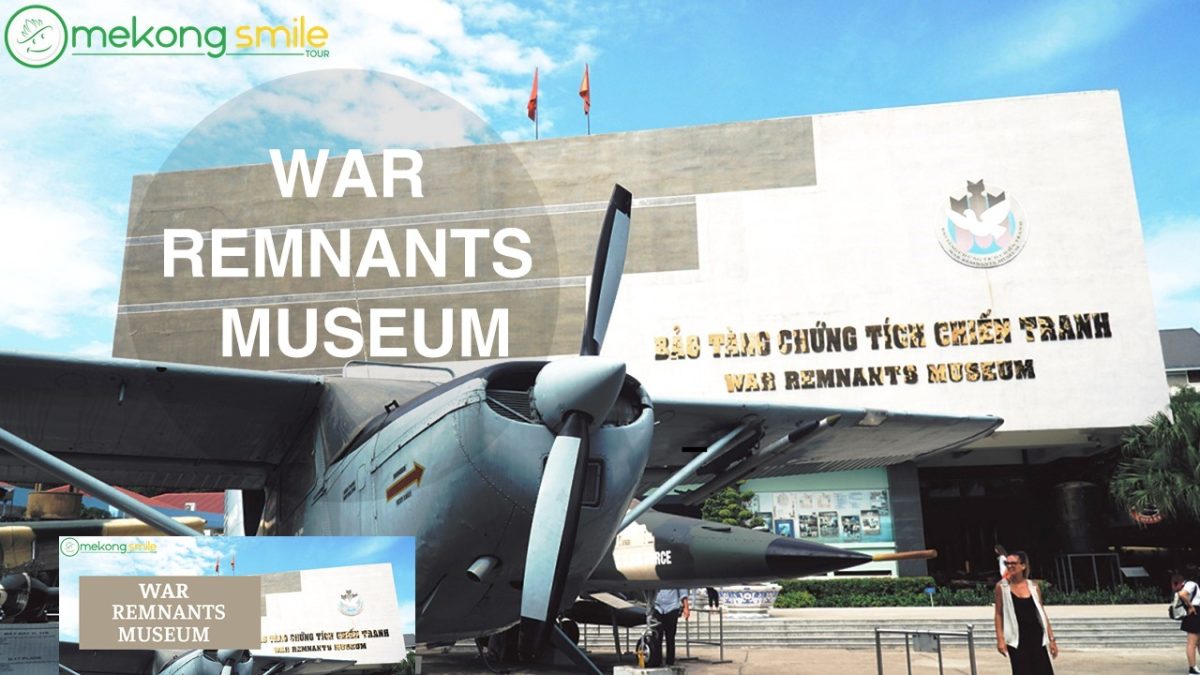





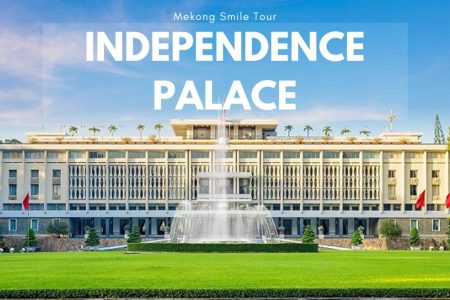
0 Comment